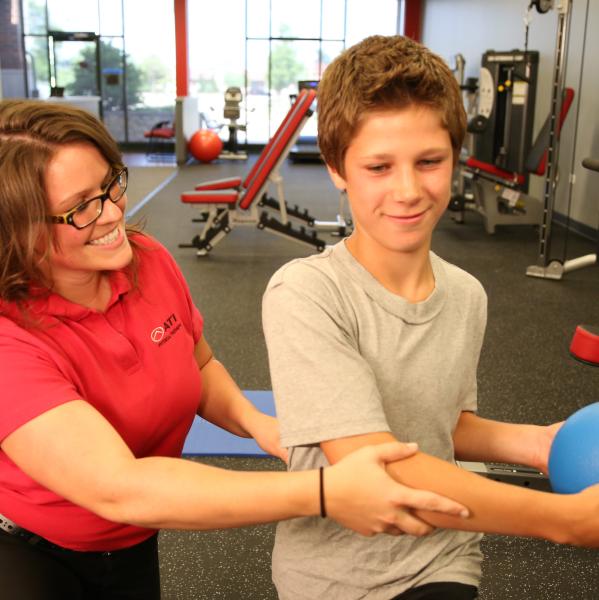
As part of the “new you” in 2013, are you hoping to try out a new career? Or, if you’re a student, is 2013 the year you need to figure out what to do after high school or college? If that’s you, consider a career in physical therapy!
According to the Bureau of Labor Statistics, the field of physical therapy is growing at a rate of 39%, which is “much faster than average.” As the healthcare industry grows, the demand for physical therapists (PTs) and physical therapy assistants (PTAs) increases as well.
Adrienne Baez, a recruiting manager for ATI Physical Therapy, stopped by to give us some insight on getting a job in this growing field.
Is physical therapy the right field for you?
Adrienne suggests asking yourself some of these questions to determine if physical therapy is the right career choice for you.
- Do you have a passion for helping people get better? PTs must love seeing their patients reach their goals and get better.
- Can you think outside of the box? When you don’t get the desired result with a patient, it’s imperative for a PT to rethink the situation and figure out a new course of treatment.
- Do you have a friendly personality? PTs are constantly around people all day, so it’s important that they are easy to get along with.
- Are you a good communicator? PTs are constantly communicating – to a patient, a patient’s family, a doctor, a nurse case manager, and many others who are part of a patient’s care.
- Do you enjoy health sciences? During a DPT or PTA program, your courses will be very science-based, so it’s important that you enjoy learning about the body and the science behind it. But, a love for health sciences doesn’t stop after you get a diploma! In addition, PTs must attend courses and conferences throughout their career to obtain continuing education credits.
How can I prepare for a career in physical therapy?
Although the field is growing quickly, it is very competitive, Adrienne says. Here are some ways she suggests to help you get ahead:
- Obtain a degree in a health-related field: As you’ll see in the education section below, your first step to becoming a PT is to earn your bachelor’s degree in a health-related field. High school students considering PT as a career should take some advanced math and science classes to prepare.
- Volunteer and shadow: Volunteering in a physical therapy setting shows your commitment to the field, while shadowing helps you learn about the industry from others.
- Build relationships: As you volunteer and shadow, begin to build relationships with those individuals. They’ll be incredibly valuable as you apply to schools and, eventually, to jobs. Build a network of mentors to help coach and guide you throughout your career.
What type of education do I need?
- Physical therapists: Typically, aspiring PTs must obtain a bachelor’s degree in a health-related field. After graduating with their bachelor’s degree, individuals apply and enroll in an accredited Doctorate of Physical Therapy (DPT) program, which typically lasts around three years. During that time, PTs learn both inside and outside the classroom through clinical observations. Following graduation, PTs must pass the National Physical Therapy Exam (NPTE) to become licensed.
- Physical therapy assistants: PTAs must obtain their Associates Degree as a Physical Therapy Assistant, which is typically a two-year program. Unlike a PT, PTAs do not need to have a bachelor’s degree before applying for their Associates Degree (although some do have one).
If you’re on your way to a career in physical therapy, consider joining the ATI Physical Therapy team. Check out our Careers page for the latest opportunities!
This post is part of our New Year, New You" blog series to kick off 2013. Check out these other posts in our series...
From your couch to the 5K finish line: Ten tips to train for your first race
Yoga -- the "all-encompassing" workout
Dealing with Acute and Chronic Injuries
A Peek at Posture
Gear up for the New Year with fitness safety tips
Is the sitting position ailing you? Take a workstation break with these stretches.
